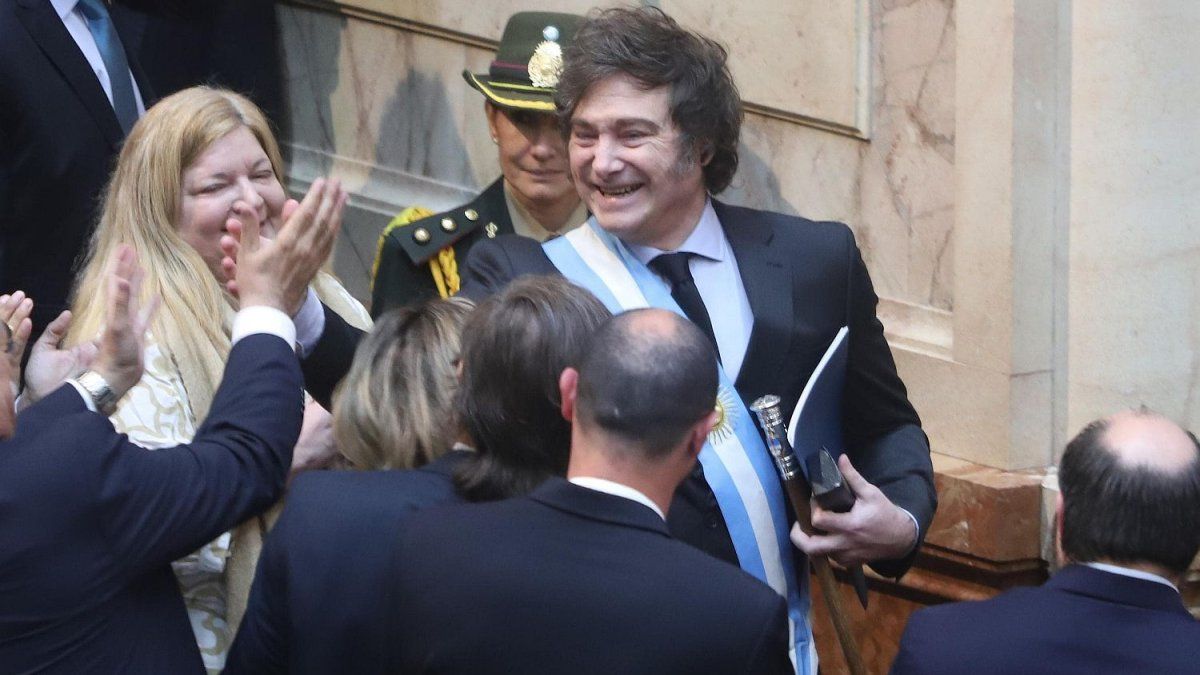The President Javier Milei presented this Sunday a new methodology with three objectives that will now govern the national budget.
On national television, when presenting the 2025 Budget to Congress, the president announced that part of the Government’s legacy “that is to change forever the methodology by which the Budget is drawn up.”
Milei explained that the deficit was always “a consequence of thinking first how much to spend, and then seeing how to achieve it. We are going to do it the other way around, thinking first how much we have to save, and then seeing how much we can spend.”
For this reason, the President proposed “an unbreakable fiscal rule. For this budget and for all budgets to come from here on out, laid down some premises.
The first premise is that “The primary surplus must necessarily equal or exceed the amount of debt interest to be paid.” Thus, “if the primary surplus is the result of netting income with current and capital expenditure, primary expenditure will have to be equal to or less than income minus the primary surplus.” That is, the level of expenditure to be spent “will be conditioned by the level of primary surplus to be achieved, which in turn will be conditioned by the amount of debt to be paid.”
Budget 2025: current expenditure
Regarding current spending, he indicated that “it is composed of the sum of automatic spending, illegally indexed by law; and discretionary spending.” The first “is the spending component that is indexed to inflation and other variables, while the second “is not indexed, meaning that no matter how much inflation there is, it remains the same.”
Under the new scheme proposed by Milei, “If revenues are higher than estimated, automatic spending could increase by the same amount, but discretionary spending will remain the same.” Therefore, “if the increase in tax collection is temporary, the State will be able to save, which will imply the destruction of pesos, and therefore the revaluation of the peso or the cancellation of debt.”
And if economic growth is sustained, and consequently the increase in income is structural, the State will be able to return to society these savings in tax reductions, as we have committed to.”
On the other hand, he clarified that “if the economy does not grow and income is lower than estimated, automatic spending will also fall and we will reduce discretionary spending in the same proportion. So, this time, it will be the public sector and not the private sector that will absorb any possible recessions.”
The three objectives of the new budget methodology
The new budgetary methodology announced by Milei “will achieve three unprecedented objectives”:
- It’s going to “guarantee fiscal balance, ending the write-off of debt and issuance.”
- It’s going to “force the state to take charge and absorb the cost of any potential recessions.”
- And for periods of abundance such as those to come, “This will force the excess revenue to be returned to society through tax cuts”“This means that, if this methodology is maintained from now on, we will not only be able to reduce taxes, but also the size of the state, which is the real tax burden,” said the president.
Source: Ambito
I am Pierce Boyd, a driven and ambitious professional working in the news industry. I have been writing for 24 Hours Worlds for over five years, specializing in sports section coverage. During my tenure at the publication, I have built an impressive portfolio of articles that has earned me a reputation as an experienced journalist and content creator.




